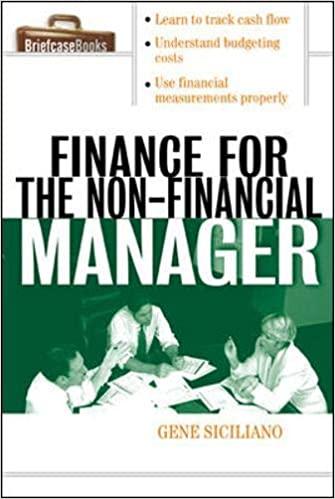Question
Shin Lee had heard a great deal about recent turmoil at Bombardier and it had piqued his interest in the company. Lee knew that a
Shin Lee had heard a great deal about recent turmoil at Bombardier and it had piqued his interest in the company. Lee knew that a company in trouble was often a good buy, especially if its future looked bright. Did Bombardier's future look bright? Having paid particular attention to his finance courses, Lee knew the answer to that question depended, in part, on the company's Weighted Average Cost of Capital (WACC) a key indicator of its profitability going forward.
Lee's research informed him that Bombardier's Beta was 2.49 and that the Market Risk Premium was 4.24 per cent. He set out to calculate the weight of all the equity and preferred securities for Bombardier based on the closing share price as of October 3, 2022. Bombardier's current share price information is available at Bombardier Investor Relations. Bombardier's historical share pricing is available from sites such as Yahoo Finance. Lee noted that Bombardier did a share consolidation in June 2022 which resulted in 12,349,369 Class A shares outstanding and 85,373,898 Class B shares outstanding. By looking at the 2021 Annual Report (available as an Additional Resource), Lee could determine the number of preferred shares outstanding (see p. 85 of the Annual Report) and exchange rates (see p. 84 of the Annual Report). He decided to ignore warrants, share options, PSUs and DSUs. The exchange rate is important because the values in the Annual Report are in USD whereas the share prices are in CAD. He will need then to convert the USD values to CAD (please do so using the rates in the annual report). He assumed the company's effective tax rate was 32.9 per cent (an average of the last several years that Bombardier had a positive tax rate). Lee researched the Canadian 10-year bond yield at the Bank of Canada, which would be necessary in calculating the cost of equity for Bombardier. He found that this yield was approximately 3.5 per cent. [Kindly note that we are using Bombardiers latest annual report and then using more recent market pricing for illustrative teaching purposes. Normally one would use the most recent publicly available financial statement data (i.e., quarterly statements) but we will use the annual report for this Case as it has the most disclosure and thus provides the best opportunity to get familiar with more detailed financial statements.]
Lee expected to incorporate the range of preferred shares and their most recent dividend payouts (see p. 86 of the Annual Report) into his cost of capital calculations. He assumes that the growth rate of all the preferred shares dividends is zero. He also assumes that both Class A and Class B common shares have the same cost of equity. When calculating the cost of debt, he would include the company's long-term debt (see p. 150 of the Annual Report). On February 19, 2021, the company repaid the balance of the secured term loan, and therefore for December 31st, 2021, he assumes that their market values are 0 (i.e., it has been paid off). He further assumes that the amounts of long-term debt on p. 150 of the Annual Report (the column with header December 31st, 2021) were the best estimates of the market values in USD. Lee found the bond prices for all of Bombardier's bonds that are still outstanding using the Bloomberg terminal at the Techplex in Goodes Hall (see Table 1, below; the face value is 100). The bond prices are necessary for the computation of the YTM of each bond. One issue is how to handle fractional years for bond maturities, especially knowing that they are semi-annual bonds. For simplicity, he decided to round the number of periods when computing the YTM of each bond, as seen in Table 1 below. In addition to the six bonds still outstanding, there are two other pieces of debt that you must take into account, as shown on p. 150 of the Annual Report. Assume the interest expense for the Debentures and Other are listed in the Contractual column.
Using the above information, please calculate Bombardiers Weighted Average Cost of Capital. Please show details of all your work, including all weightings and cost of capital calculations. Please submit only one word or PDF document (you may cut and paste from excel, as long as everything is clearly labelled).
Exhibit 1: Bombardier Bonds
| Issue | Price | Years to Maturity |
|---|---|---|
| December 2024 7.50% | $99.13 | 2 |
| Mar. 2025 7.50% | $97.32 | 2 |
| Jun. 2026 7.13% | $89.37 | 4 |
| April 2027 7.88% | $91.59 | 4 |
| Feb. 2028 6.00% | $90.39 | 5 |
| May 2034 7.45% | $92.38 | 11 |
Step by Step Solution
There are 3 Steps involved in it
Step: 1

Get Instant Access to Expert-Tailored Solutions
See step-by-step solutions with expert insights and AI powered tools for academic success
Step: 2

Step: 3

Ace Your Homework with AI
Get the answers you need in no time with our AI-driven, step-by-step assistance
Get Started


